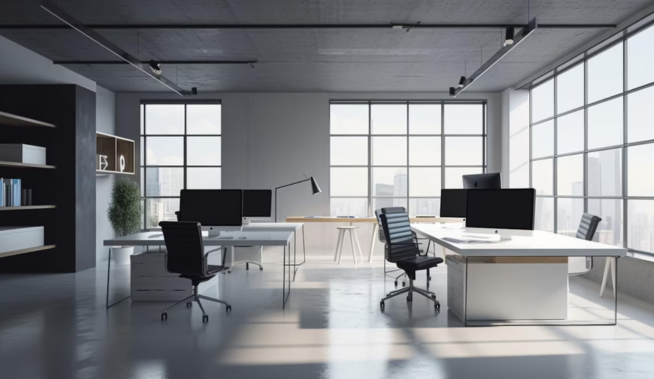In the realm of office furniture, one piece stands out as the unsung hero of productivity and comfort—the chair. Often overlooked, a good chair can make all the difference in maintaining focus, promoting good posture, and ultimately enhancing efficiency in the workplace. In this comprehensive guide, we delve into the significance of the chair in office settings, exploring its ergonomic design, benefits, and factors to consider when choosing the perfect seating solution.
The Anatomy of an Ergonomic Chair
Ergonomics is a key consideration when it comes to selecting office furniture, and the chair is no exception. A well-designed ergonomic chair promotes healthy posture, reduces strain on the body, and minimizes the risk of musculoskeletal disorders. Here are three essential features to look for in an ergonomic office chair:
Lumbar Support
Proper lumbar support is crucial for maintaining the natural curve of the spine and preventing lower back pain. Look for chairs with adjustable lumbar support to accommodate different body types and preferences.
Adjustable Height and Armrests
The ability to adjust the height of the chair and armrests ensures that users can customize their seating position for optimal comfort and support. Ideally, the feet should rest flat on the floor, and the arms should be at a comfortable angle when typing or using a mouse.
Breathable Materials
A chair with breathable upholstery allows for better airflow, reducing the risk of discomfort caused by heat and moisture buildup. Look for chairs made from mesh or other breathable fabrics for enhanced comfort during long hours of sitting.
The Benefits of Investing in Quality Seating
Investing in high-quality office chairs offers numerous benefits for both employers and employees alike. Here are three compelling reasons to prioritize comfort and ergonomics when selecting office seating:
Increased Productivity
Comfortable employees are more likely to stay focused and engaged throughout the workday, leading to increased productivity and efficiency. A supportive chair reduces discomfort and fatigue, allowing workers to concentrate on their tasks without distraction.
Improved Health and Wellbeing
Poor posture and prolonged sitting can contribute to a variety of health issues, including back pain, neck strain, and poor circulation. By providing ergonomic chairs, employers can help mitigate these risks and promote the health and wellbeing of their workforce.
Enhanced Employee Satisfaction
Providing employees with comfortable seating demonstrates a commitment to their health and comfort, which can boost morale and satisfaction in the workplace. Happy employees are more likely to feel valued and motivated, leading to higher levels of job satisfaction and retention.
Choosing the Right Chair for Your Workspace
When selecting office chairs, it’s important to consider the unique needs and preferences of your workforce. Here are three key factors to keep in mind:
Adjustability
Look for chairs with a wide range of adjustable features, including seat height, armrests, and lumbar support. This ensures that users can customize their seating position to fit their individual requirements.
Durability
Invest in chairs made from high-quality materials that are built to withstand daily use. Check for sturdy construction, reliable mechanisms, and supportive cushioning to ensure long-term durability and comfort.
Aesthetics
While comfort and ergonomics are paramount, aesthetics also play a role in creating a cohesive and inviting workspace. Choose chairs that complement the overall design aesthetic of your office while still prioritizing comfort and functionality.
Innovations in Office Chair Design
As technology continues to advance, so does the evolution of office chair design. Manufacturers are constantly innovating to provide even more ergonomic solutions tailored to the needs of modern workplaces. Here are three innovative features to look out for:
Dynamic Sitting
Traditional office chairs promote static sitting, which can lead to discomfort and stiffness over time. Dynamic sitting chairs incorporate features such as tilting mechanisms and flexible seating surfaces, encouraging users to shift and move throughout the day, promoting better circulation and reducing fatigue.
Smart Technology Integration
Some modern office chairs now come equipped with smart technology features, such as built-in sensors that monitor posture and activity levels. These chairs can provide real-time feedback to users, reminding them to adjust their sitting position or take breaks to prevent prolonged periods of sedentary behavior.
Sustainable Materials
With growing awareness of environmental issues, many manufacturers are incorporating sustainable materials into their chair designs. Look for chairs made from recycled materials or certified sustainable wood to minimize environmental impact while still providing quality seating solutions.
Overcoming Common Challenges
While office chairs offer numerous benefits, they can also present challenges, particularly in multi-user environments. Here are three common challenges and strategies for overcoming them:
Fit for All Body Types
In shared workspaces, finding chairs that accommodate the diverse needs of employees with varying body types can be challenging. Opt for chairs with adjustable features and consider providing a range of chair options to accommodate different preferences and requirements.
Maintenance and Cleaning
With regular use, office chairs can accumulate dirt, dust, and spills, requiring regular maintenance and cleaning. Choose chairs with easy-to-clean materials and removable covers to facilitate cleaning and upkeep, ensuring a hygienic and inviting workspace.
Budget Constraints
Investing in high-quality office chairs can be costly, especially for small businesses or startups with limited budgets. However, prioritizing comfort and ergonomics can ultimately lead to long-term cost savings by reducing absenteeism, turnover, and healthcare expenses associated with workplace injuries.
Conclusion
In the ever-evolving landscape of office furniture, the chair remains a cornerstone of workplace comfort and productivity. By prioritizing ergonomic design, investing in quality seating solutions, and adapting to changing needs and advancements, organizations can create a workspace that promotes health, happiness, and efficiency for all. So, whether you’re outfitting a new office space or upgrading existing furniture, remember the importance of the humble office chair. With the right selection and attention to detail, you can elevate the office experience and set the stage for success in the modern workplace.

